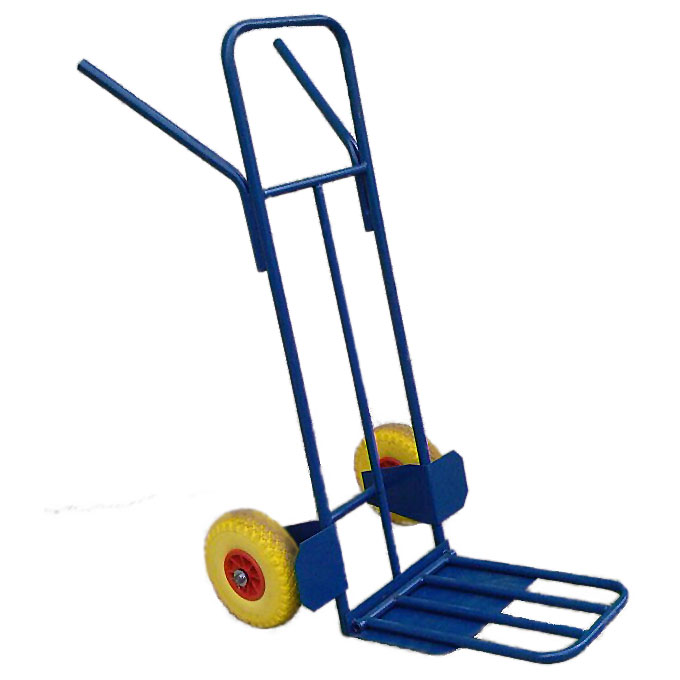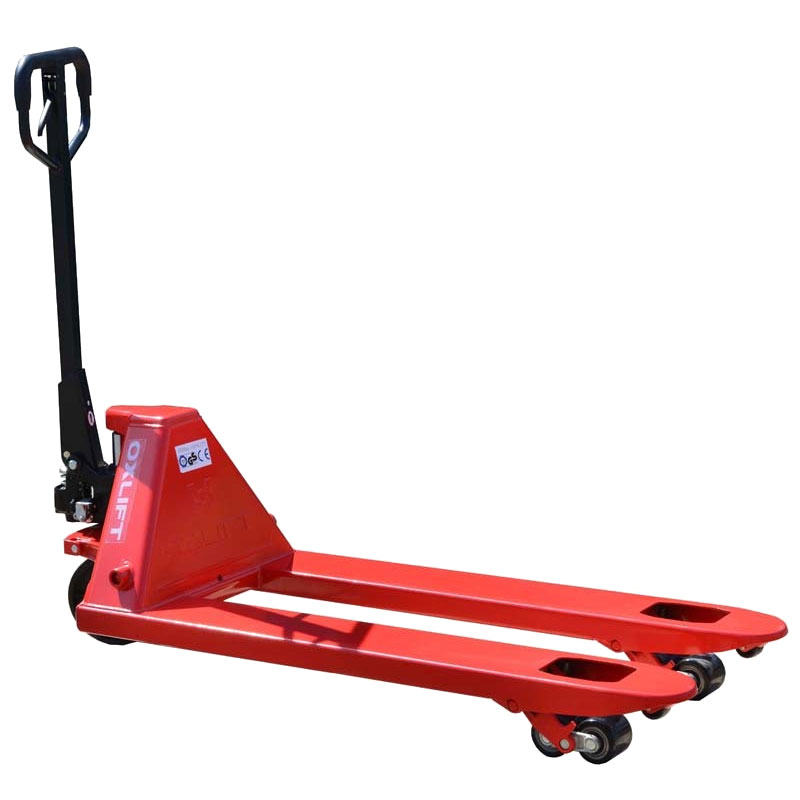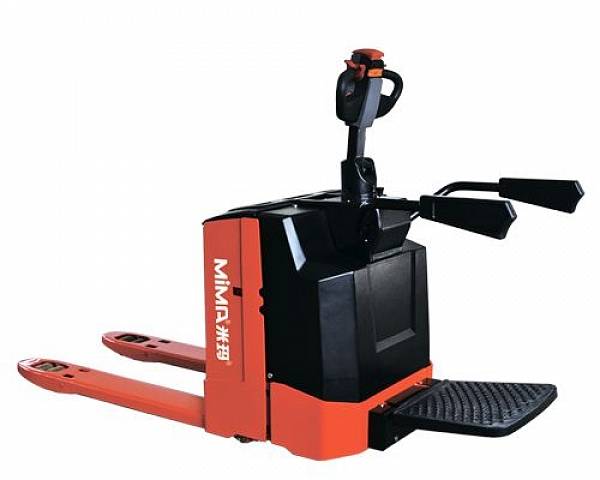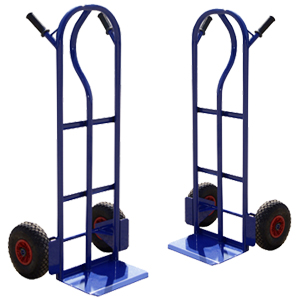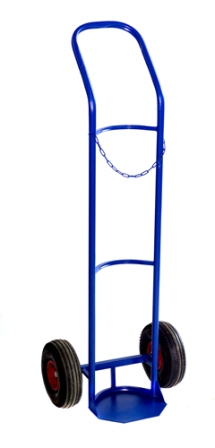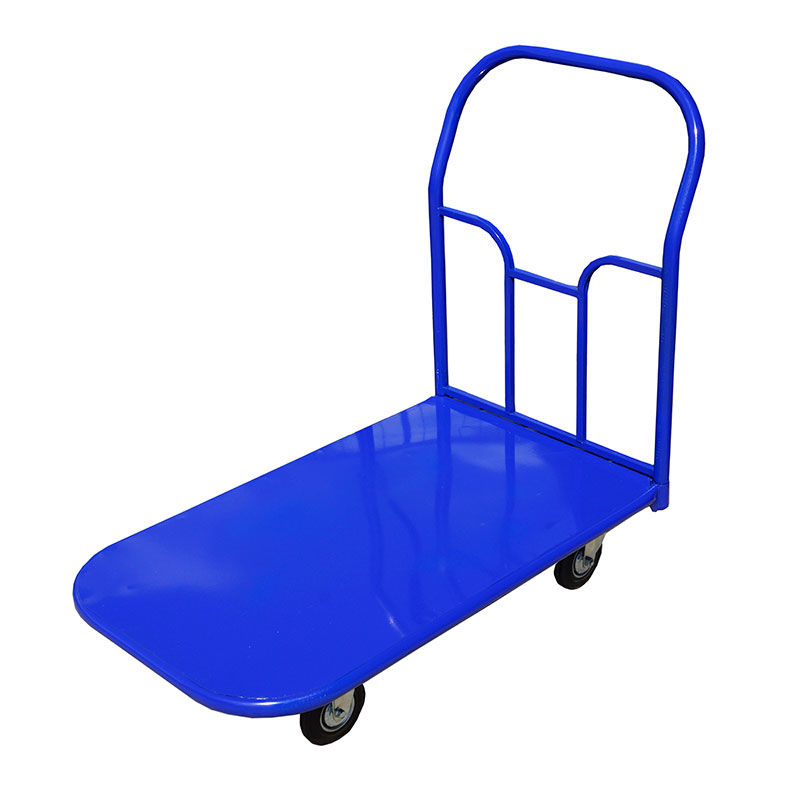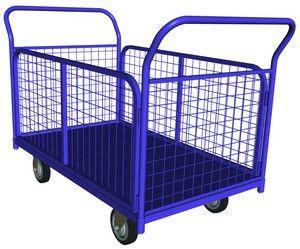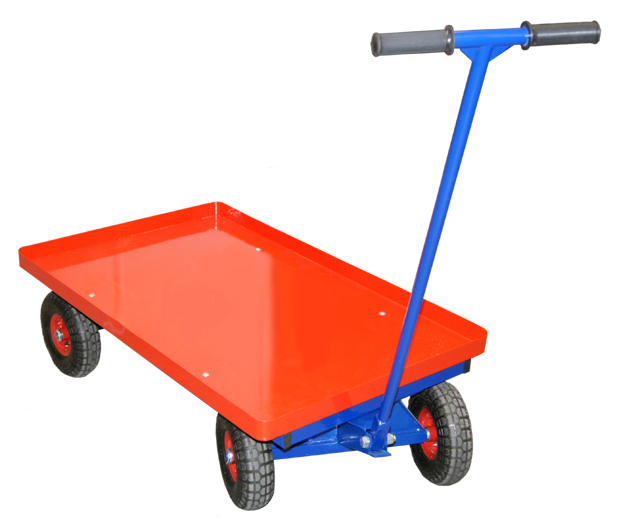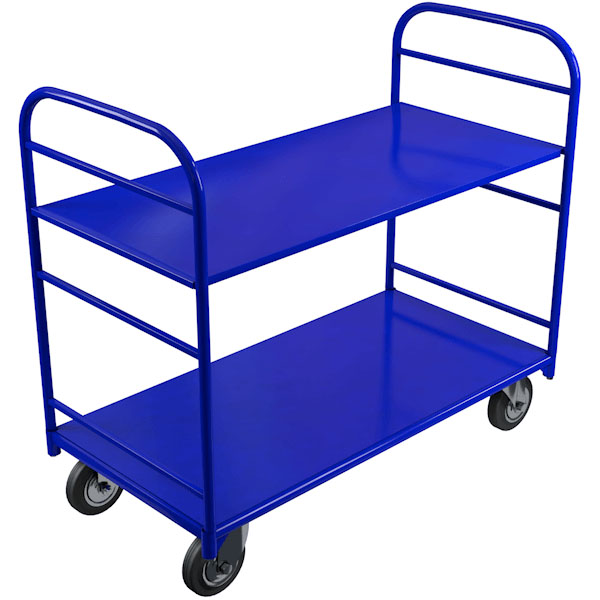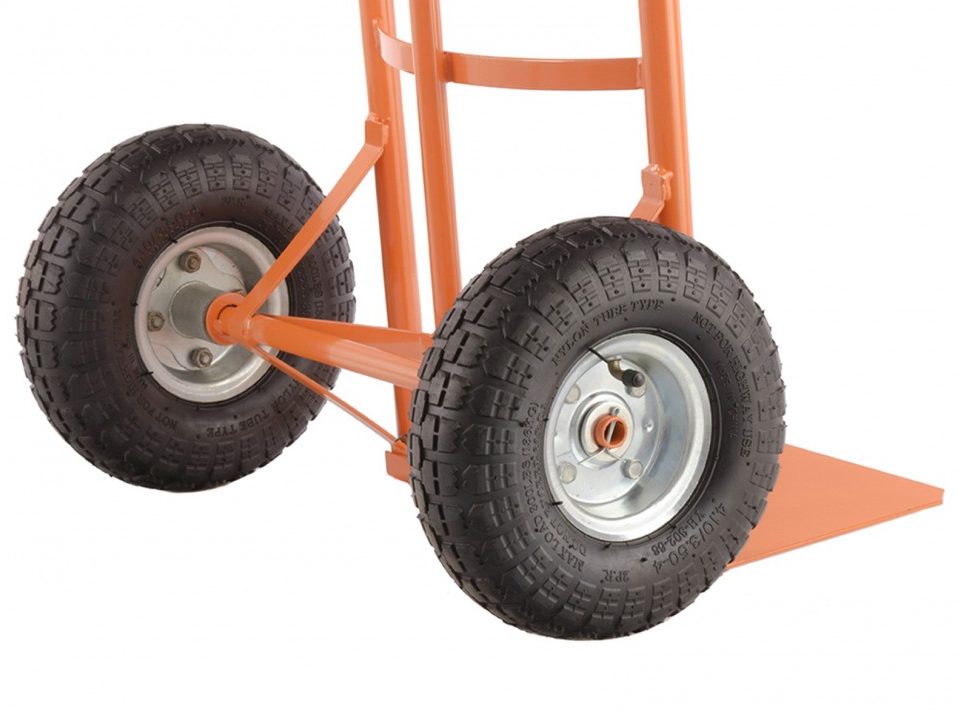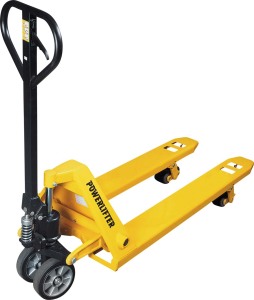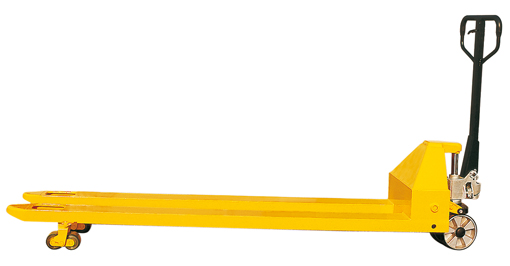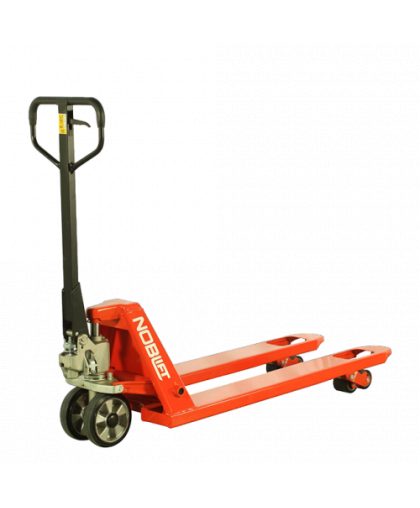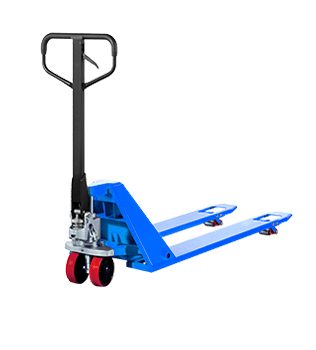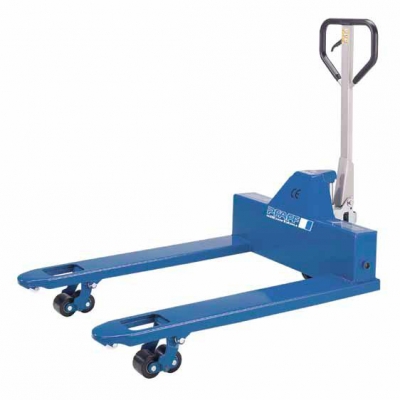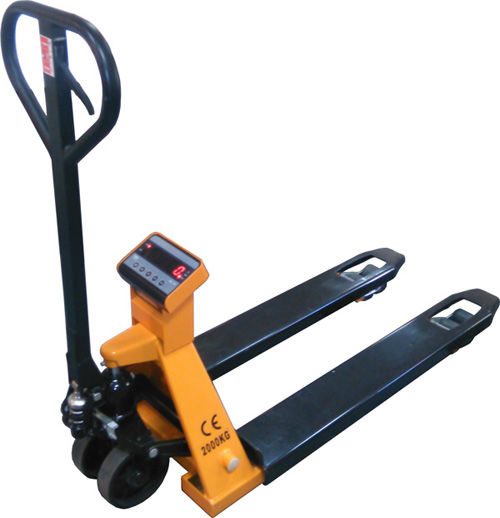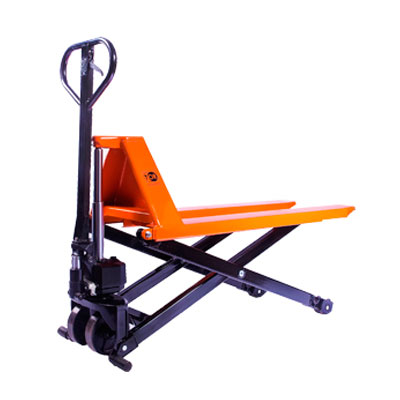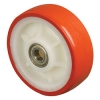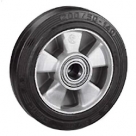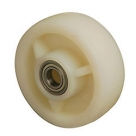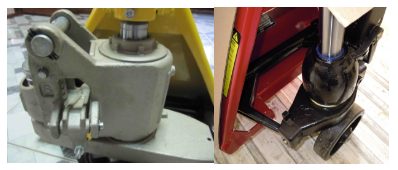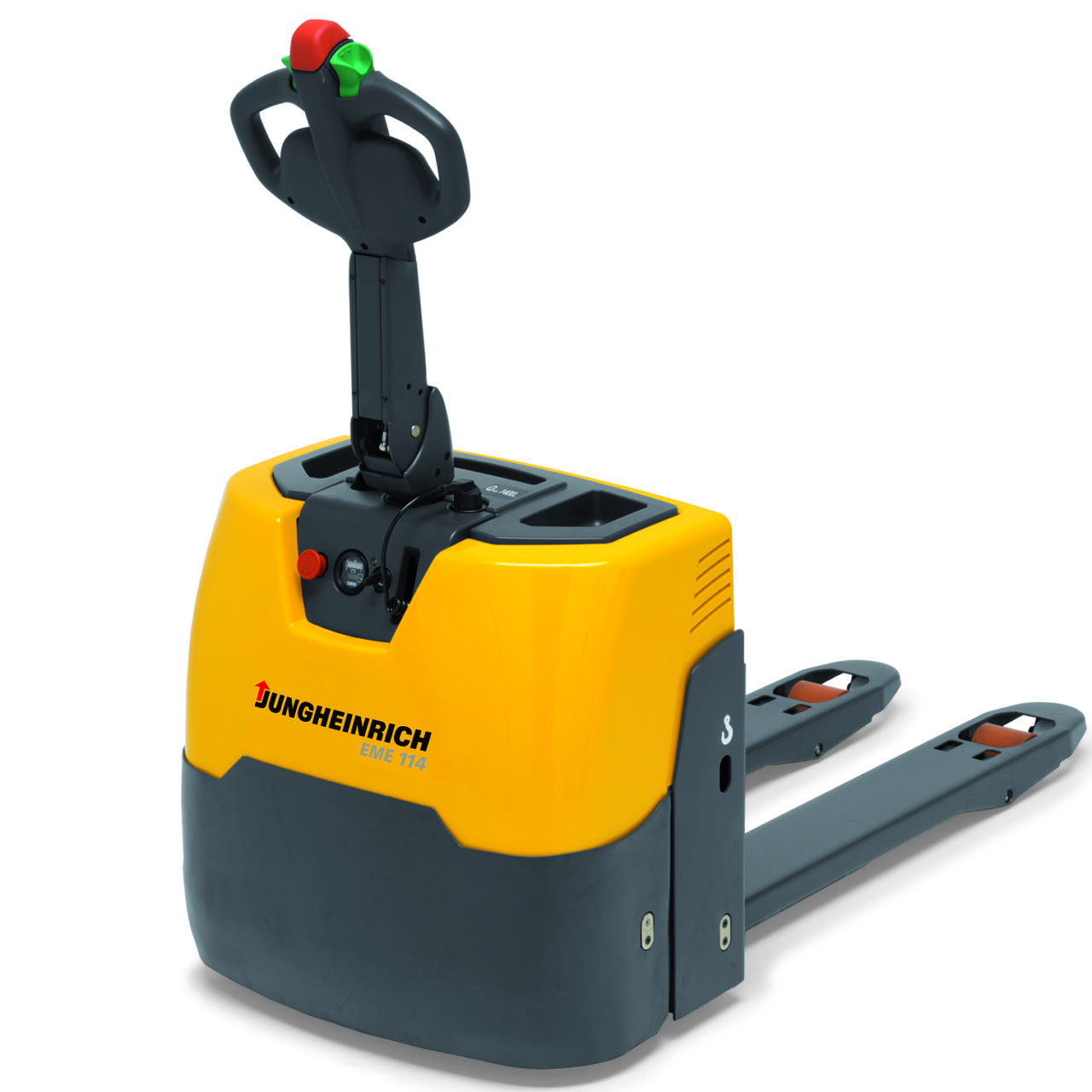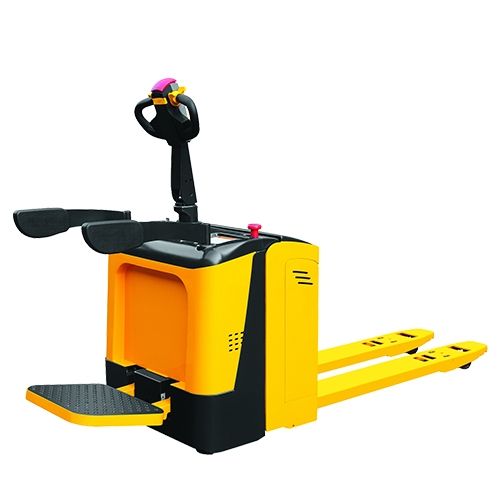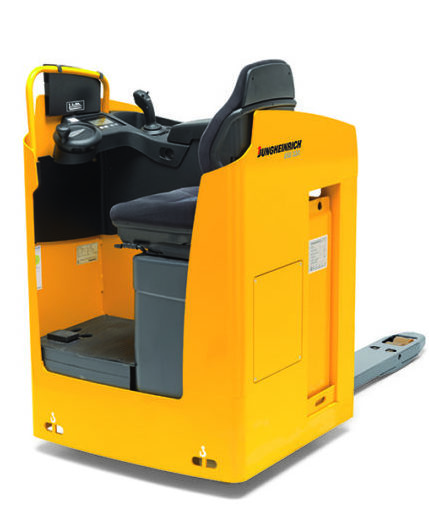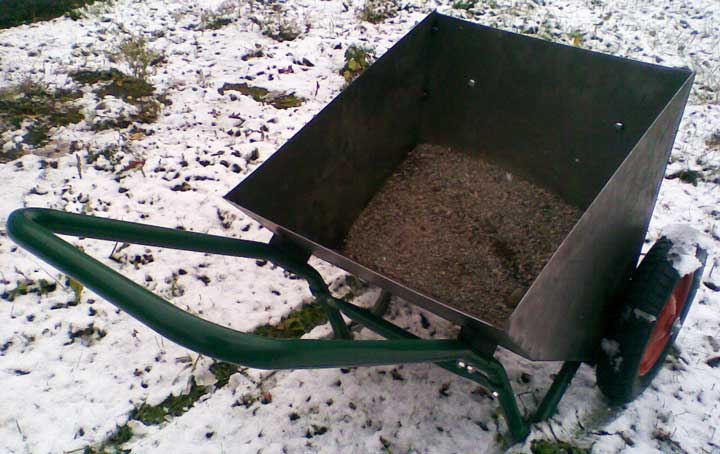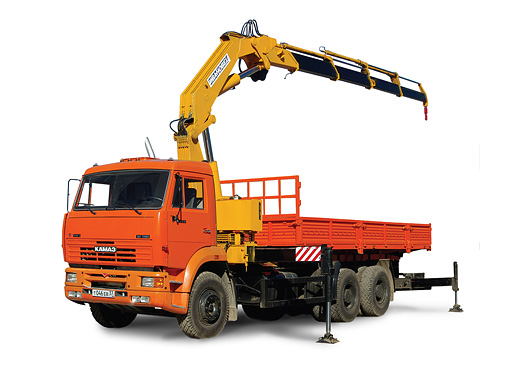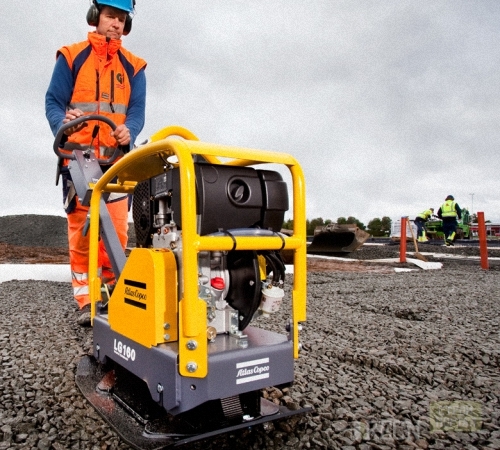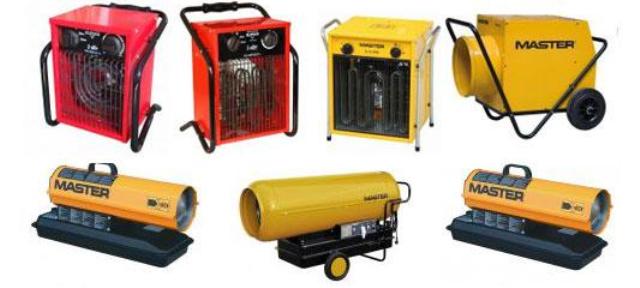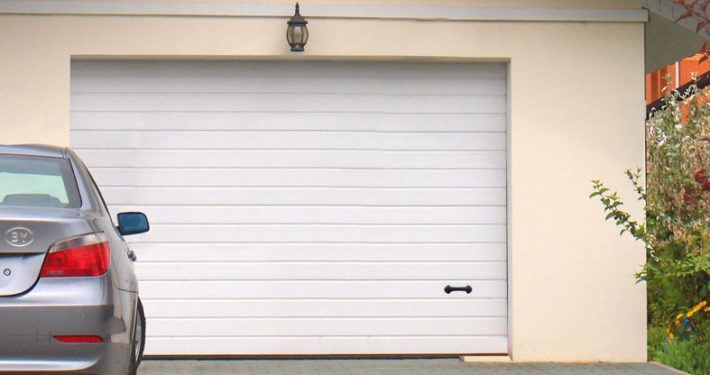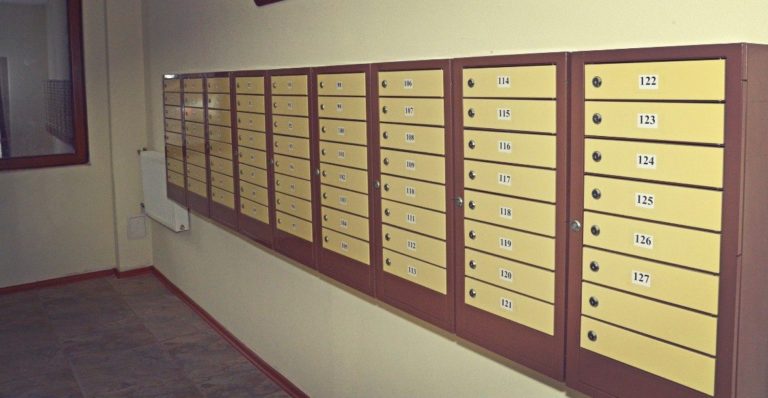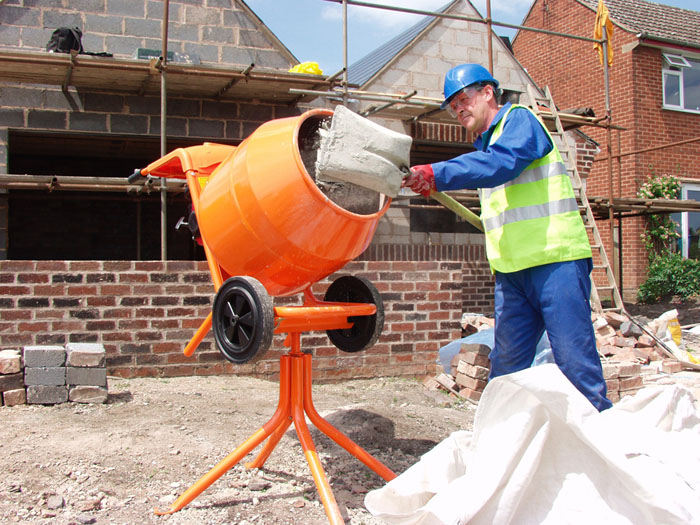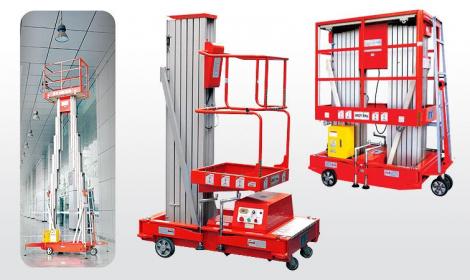4 tips for choosing a storage trolley: hydraulic and electric trolleys
It is difficult to imagine the work of a warehouse or supermarket without special equipment, because otherwise it would be possible to quickly transport a huge amount of goods without damaging them and without resorting to the help of hundreds of workers. All kinds of trucks and loaders come to the rescue. Ideally, the warehouse should have equipment of different carrying capacities and dimensions, so that you can quickly cope with different tasks. Along with bulky and difficult to service forklifts in warehouses, trolleys are actively used. They are of various types, hydraulic trolleys have become widespread, they are also dead, as well as their electrical counterpart, or electro-dead. However, fully handcarts are still in use. Which option is better and what to consider when choosing a storage trolley, let's figure it out together.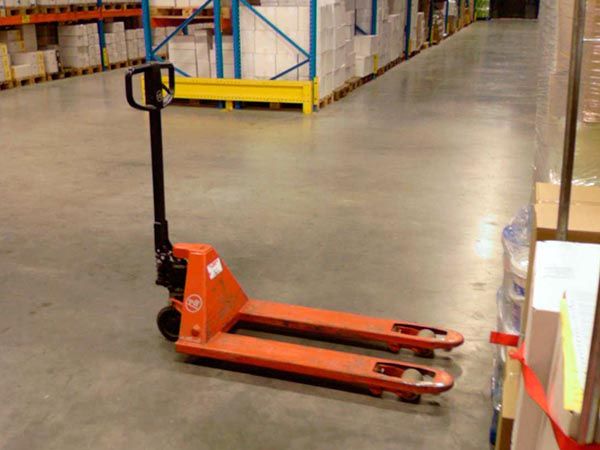
Types of storage trolleys
It is difficult to say exactly when the first cart arrived. This simple device with a platform, wheels and a handle has been used for hundreds and thousands of years to move heavy loads in construction, trade and agriculture. Once all the elements of the cart were made of wood, later metal replaced them. Now the wheels are made of rubber, nylon or polyurethane, and the process of handling the trolley often requires minimal physical effort. Progress also touched such a primitive, at first glance, device. Now the trolley is not just a platform on wheels, but a well-thought-out product, even technically sophisticated, when it comes to hydraulic and electric models.
It's time to sort out the types of storage trolleys. They can be divided into several types:
- hand trolley simplifies the process of moving goods, but requires considerable effort from a person, because he carries out loading on his own, and in order to push the trolley, force must be applied. Such devices are used to transport light and not very large loads;

- hand pallet truck (junk, junk, rock) - a good option for small warehouses, equipped with forks, convenient for moving loads of 1.5-3 tons on pallets. It is necessary to push the trolley with the use of physical force, but the raising and lowering of the load is simplified due to the presence of a hydraulic mechanism, which is actuated by a few clicks on the lever or pedal;

- electric trolley (self-propelled jar, electrocooler) - a solution for larger warehouses, is significantly more expensive than the hydraulic option, but also gives undeniably more advantages. Thanks to the electric drive, operating from the battery, such a trolley can move independently, the physical efforts of a person are not applied at the same time, which can significantly accelerate warehouse work. The carrying capacity of such equipment is up to 3 tons.

The choice of trolley depends on the operating mode of the warehouse or store. If the turnover is small, and the loads are light, then it will be cheaper and easier to do with a regular hand truck. If you are the owner of a sufficient large warehouse, then your arsenal should have electric trolleys, and possibly even forklifts. Handcarts are also used to unload goods on supermarket shelves, but with a large turnover it makes sense to use rockies.
More precisely determine the type of trolley for your own warehouse or supermarket will help you a detailed description of all the features, types and advantages of each type of trolley.
Hand Trolleys
Warehouse hand truck consists of a minimum number of key elements. These are wheels, a platform where loads are loaded, and handles for maximum convenient control. Depending on the number and type of wheels, the size of the platform and other features Hand trucks are divided into the following types:
- two wheeled trolleys They are distinguished by a small platform and a high support, suitable for transportation of oversized cargo up to 300 kg (for example, household appliances). We take maneuverability into advantages, because the product is indispensable for warehouses and shops, where there is little space between the racks;

- trolley for transporting barrels and cylinders - A modification of the usual two-wheeled, but on the frame it has an additional fastening for fixing the load (this is the holder and chain);

- stair trolley it looks like a regular two-wheeled one, but on each side it has three wheels, which allows you to conveniently move the load along stairs. If a store or warehouse is full of similar architectural elements, then a staircase trolley can significantly simplify the life of staff and speed up the work of the enterprise;

- four-wheel platform It features a large platform that rests on 4 wheels. Lifting capacity up to 500 kg, the handle may have additional jumpers so that the load does not fall during transportation. The universal type of carts, which is used both in warehouses and in stores, and even in markets for the transportation of various types of goods (boxes, bags, boxes);

- four-wheeled with sides - modification of the cart of the previous type, it has lattice walls around the perimeter, therefore it is suitable for transportation of small loads. There are models with removable sides that are mounted on special hooks. If necessary, such a cart turns into a regular platform;

- swivel cart also equipped with a wide platform and 4 wheels, but the handle in them is more like the one used in scooters. The front axle is equipped with swivel wheels, which gives the cart maneuverability, which is important when moving through narrow spaces. Often, such models are equipped with pneumatic wheels, so they can comfortably move on any surface. You have to pay for the numerous advantages in rubles - such carts cost 1.5-2 times more expensive than ordinary four-wheeled ones;

- long trolleys many of us have seen in restaurants, hotels and hospitals. This is essentially a large mobile tray with several levels. They are rarely used in warehouses, they are necessary when it is necessary to transport a lot of small goods (for example, spare parts, gadgets) - it is more convenient on a cart than in hands. Such products are distinguished by maneuverability and low weight. The most popular carts for two and three tiers.

Separately, we noteluggage carts which are equipped with 4 wheels and a platform, usually in the presence of a solid or frame type side. Also, the design provides for the presence of a towing device, allows the transport of goods up to 3 tons, it is used in large warehouses, as well as in workshops and at wholesale stores.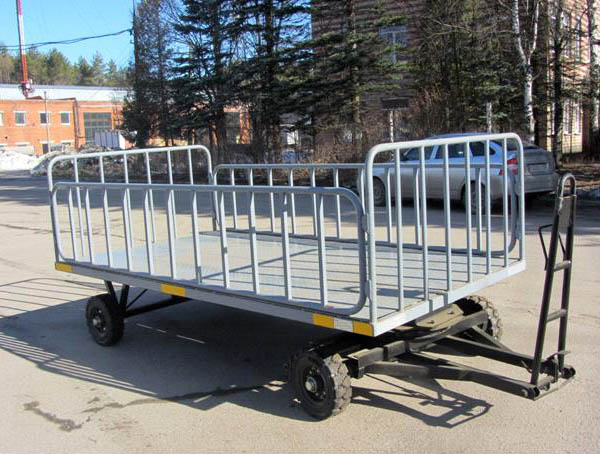
When buying, check how comfortable it is to hold the handle of the trolley, whether the platform is commensurate with the transported goods, and whether it will go through all the doors. On examination, evaluate the quality of the welds and the integrity of the color. Dents and traces of rust are not allowed. Particular attention is paid to wheels:
- pneumatic wheels They are distinguished by good carrying capacity, cross-country ability, low noise level and smooth running. For a warehouse this is the best option;

- cast rubber wheels inferior in terms of capacity, but win in strength. If you have to often move along the street, i.e. the risk of tire puncture is increased, it is better to stay on this option.
For each wheel of the cart indicate its carrying capacity.So, in a 4-wheeled cart with a carrying capacity of 500 kg, each wheel should withstand 125 kg, but it is better if this figure is greater, with a margin of 25-30%. Prefer needle bearings - they are more durable than plain bearings.
Hydraulic trolleys for warehouse
Hydraulic carts are popularly referred to as junk boxes, and the thing is that the first carts that appeared in the USSR were from Finnish manufacturer Rocla. This is the same story as with Xerox hardware. In Soviet times, they also used Bulgarian carts, but their quality soon deteriorated, but Finnish devices proved to be excellent.
The main element of modern rocky is lifting forksthat drives the hydraulic unit. The warehouse worker needs to bring the forks under the load, press the lever several times to start the hydraulic mechanism, and the trolley itself will raise and lower the load. Rockla moves thanks to the wheels, but it needs to be pushed. The equipment is great for moving goods on pallets. A wide range of hydraulic trolleys for the warehouse are presented in the online store "Trolley-Stacker". The seller directly cooperates with manufacturers, therefore, it offers an official guarantee, after-sales service and competitive prices. Competent staff will always help with the choice and, if necessary, arrange delivery to any city in the country.
The popularity of hydraulic trolleys led to the appearance of their various modifications:
- standard rockla has a load capacity of up to 2.5 tons and is fully consistent with the traditional device of the hydraulic trolley described above. Suitable for work in the warehouse and on the street, is inexpensive;

- forklift trucks they allow you to transport twice as many pallets at a time, because the length of the forks is from 1.3 to 3 m. Of course, this significantly speeds up the loading / unloading process, but there are also limitations. The bearing capacity of longer forks is reduced to about 2 tons, because such equipment is more suitable for not too heavy loads. Carts of this type are more expensive than standard;

- short fork trolleys indispensable when you need to work in confined spaces, for example, when the distance between the racks in the warehouse is minimal, or when loading takes place in the back of a car. The length of the pitchfork is 0.8-1 m, carrying capacity 2-2.5 tons;

- low profile trolleys Differ in a small height of the pitchfork above the ground - only 35 mm. Wheels, of course, also have a reduced diameter. Working with such equipment is a little more difficult, its cost is higher than that of standard rockley. Low profile trolleys help out when you need to work with loads without pallets (for example, equipment) or with pallets of European and American type, which are slightly different from domestic ones;

- wide fork trolleys. The standard width of the forks is 55 cm, but there is equipment where the width of the forks reaches 85 cm. It is used to transport non-standard, large loads. To ensure reliability and stability, the housing is made of especially durable materials. Also note that there is equipment with a fork width of less than 55 cm, it finds application when working with small loads;

- trolleys with integrated scales they allow not only to transport and unload the cargo, but also to weigh it, the accuracy of measurements, as a rule, ranges from 0.5-1 kg. A good solution for a retail warehouse, will allow workers not to once again shift the load onto separate scales;

- scissor lift trolleys serve not only for transportation, but also for lifting and sorting goods. When lifting the load to a height of 20 cm or more, the scissor mechanism starts to work, the trolley cannot be rolled. The maximum level of platform lifting is 0.8 m.

Carrying capacity of trolleys varies from 500 kg to 3 t, but there are also models that can easily withstand all 5 tons (i.e. titans).For a standard trolley with a fork length of 115 cm and a width of 55 cm, the load capacity is 2-2.5 tons.
When choosing a jar, it is important to pay attention to the material of the wheel:
- polyurethane wheels perform well on a flat surface, wear-resistant, versatile, but when driving a little noisier than rubber wheels;

- rubber wheels differ in the minimum noise level, are suitable for uneven surfaces, as the soft material compensates for height differences. Minus - higher rolling resistance than polyurethane and nylon;

- nylon in terms of noise level, they are about the same as polyurethane ones, but inferior to them in terms of wear resistance. Their main advantage is resistance to aggressive substances, incl. petroleum products, organic solvents, weak alkalis and acids. If you have to work with such substances, then nylon wheels will be the best choice. True, the trolley itself must be protected from negative influences. Galvanized products that withstand contact with constantly high humidity and active chemicals show best of all.

Steering wheels have a diameter of 18-20 cm: wheels with a diameter of 18 cm are usually placed in trolleys of 2 tons, and in trolleys of 2.5 tons or more - 20 cm. Fork Rollers have a diameter of 6-8 cm, can be single or tandem, the latter show themselves well on bumps.
Also, when choosing a rockley, pay attention to the following points:
- waterworkswhich is the most expensive piece of equipment. In trolleys with a lifting capacity of up to 2 tons, a welded hydraulic unit is placed (in the photo on the right), with a lifting capacity of 2.5 tons or more - solid cast with a nut (left);

- weight indirectly indicates quality. If we compare two models with similar characteristics, then the one that weighs more will be better. So, more metal went to it, and it will be more reliable in operation;
- grease nipples, or fittings, for moving parts not all models have, but their presence will allow us to talk about a longer product life, and the more grease fittings, the better;
- parts availability - A very important factor that is often not taken into account, especially if the price of the product is low. So it is better to take products from well-known manufacturers and from official sellers to reduce the risk of quality problems and the absence of parts to a minimum.
Electric trolley
Electric trolleys are often also called self-propelled, and all because there is no need to push them - the motor, which is powered by a battery, does everything for a person. Raising and lowering the forks is carried out by the hydraulic system, but the operator does not have to press the lever - just press the button. Of course, the presence of a motor and battery makes the trolley a little more dimensional and expensive, but the productivity of one employee will increase significantly. It makes sense to order such equipment only at medium and large warehouses.
Depending on where the operator controlling the movement of the trolley will be located, equipment can be of several types:
- leash or pedestrian trolley - the option when the operator is walking nearby is suitable for short distances. Speed up to 6 km / h, load capacity up to 1.5 tons;

- platform trolley assumes a small platform for the operator, he controls the trolley while standing. Convenient when moving to medium distances. Speed up to 12 km / h, load capacity up to 2 tons;

- trolley with operator seat - the most convenient option for the employee, allows you to comfortably transport goods in large warehouses and throughout production facilities. Speed up to 15 km / h, load capacity up to 3 tons.

The carrying capacity varies, but rarely exceeds 3 tons; the thickness of the frame depends on it. As for the type of wheels, here everything is, in principle, the same as in the case of manual hydraulic trolleys.
The heart of the electric trolley is accumulator battery. Most receive capacities from 130 to 375 Ah (24V), the choice depends on the expected intensity of the load. There are models with a battery capacity of up to 1000 Ah (48V), they are designed for serious production loads and, as a rule, have a seat for the operator. Almost all modern models are equipped with three-phase AC electrical systems. The DC option can be found either in old equipment, or in very cheap.
Concerning brake system, the more expensive equipment is equipped with an electromagnetic brake system, which shows itself as reliable and safe as possible. Simpler models get mechanical brakes; in the cheapest models there are no brakes at all.
When choosing, also pay attention to the following elements:
- convenience of controls. As a rule, directional switches are located under the thumbs. The switches and the handle itself must be made of abrasion resistant material;
- additional features. Many experts rightly believe that the wide functionality for the trolley is completely optional, but if desired, models with a ton of additional functions can be found on the market. These are protective bumpers, the ability to activate not with a key, but with a code, modified forks and wheels, and even a closed cabin for working in a cold warehouse.
Before you go to choose a storage trolley, carefully analyze the operation of an existing or future warehouse, evaluate the turnover, and then decide which equipment will be most in demand in specific conditions. Perhaps you should look in general towards forklifts.

